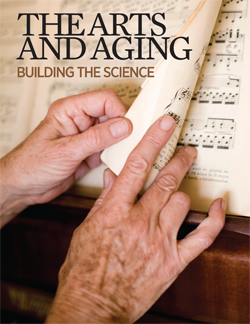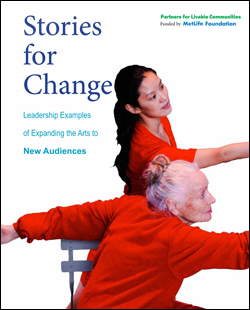Arts and Disability
"For those of us who have participated in a half-century of powerful activism by people with disabilities, a familiar slogan summarizes our call to action: Nothing about us without us." Nikki Brown-Booker writes in the Winter 2022 issue of Stanford Social Innovation Review.
Read More...The Communications Network designed an accessibility resource page to provide information and resources on how to create and maintain an inclusive environment that is accessible to those with disabilities.
Read More...The Ford Foundation and The Andrew W. Mellon Foundation launched Disability Futures, the only financial award in the US for disabled creatives from all disciplines, according to the announcement.
Read More..."All funders across the philanthropic spectrum should work to ensure that the projects we fund are made accessible to people with disabilities," states in a recent post Rachel Pardoe, program officer for Older Adults and People with Disabilities at The New York Community Trust.
Read More...Judy Heumann, an internationally recognized disability rights leader, joined in 2017 the Ford Foundation for a yearlong fellowship, working with the foundation’s staff to integrate a disability-inclusive perspective across their work. On her own, as a blog post/interview by the Ford Foundation details, she researched the inclusion of disability in film and television.
Read More...Led by disability studies scholars and disability activists, a movement is underway to hold arts institutions accountable for the lack of accessible programming and accommodations for people with disabilities. Twenty-eight years after the passage of the Americans with Disabilities Act, the Bay Area, a major hub for both arts and culture as well as the disability rights movement, still has many museums that have done the bare minimum (or less) to welcome in patrons with disabilities, and funding to support access is rare.
Read More...From American Academy of Poets:
With support from Lannan Foundation, the poetry organizations convened last November in Santa Fe, New Mexico, to begin discussing how they might join forces to enhance the visibility of the art form and its impact on people’s everyday lives.
36 pages, February 2013. National Endowment for the Arts, 1100 Pennsylvania Avenue NW, Washington, D.C., 20506. (202) 682-5400. http://arts.gov/
Download:
Read More...116 pages, May 2012. Partners for Livable Communities, 1429 21st Street NW, Washington, D.C. 20036, (202) 887-5990 www.livable.org.
Download:
![]() Stories for Change (2.5Mb)
Stories for Change (2.5Mb)
2007, 246 pages. The New Press, 38 Greene St., NY, NY, 10013, (212) 629-8802, www.thenewpress.com
Read More...

